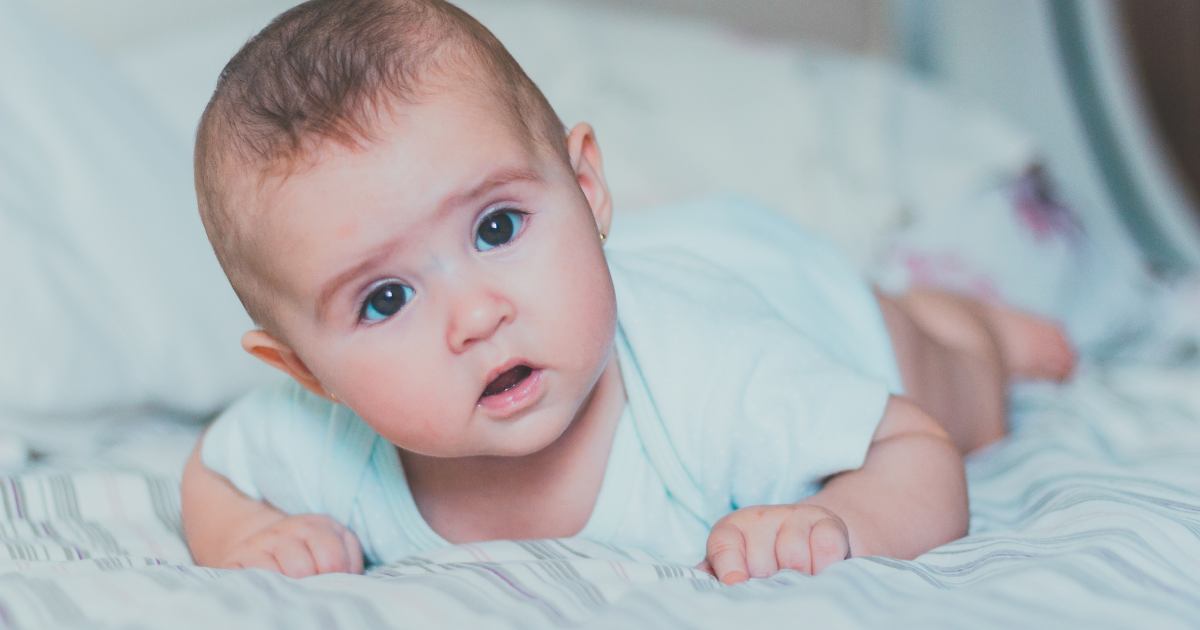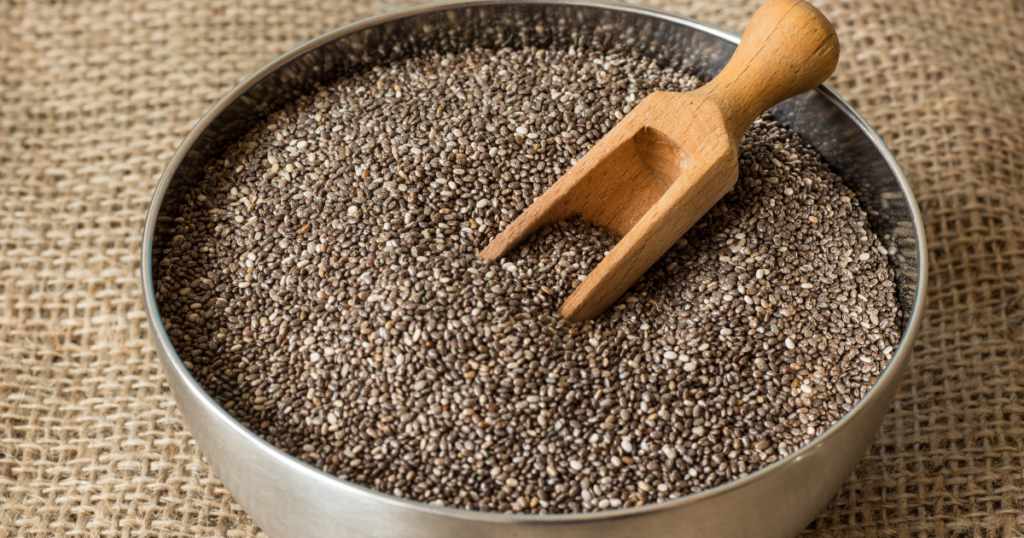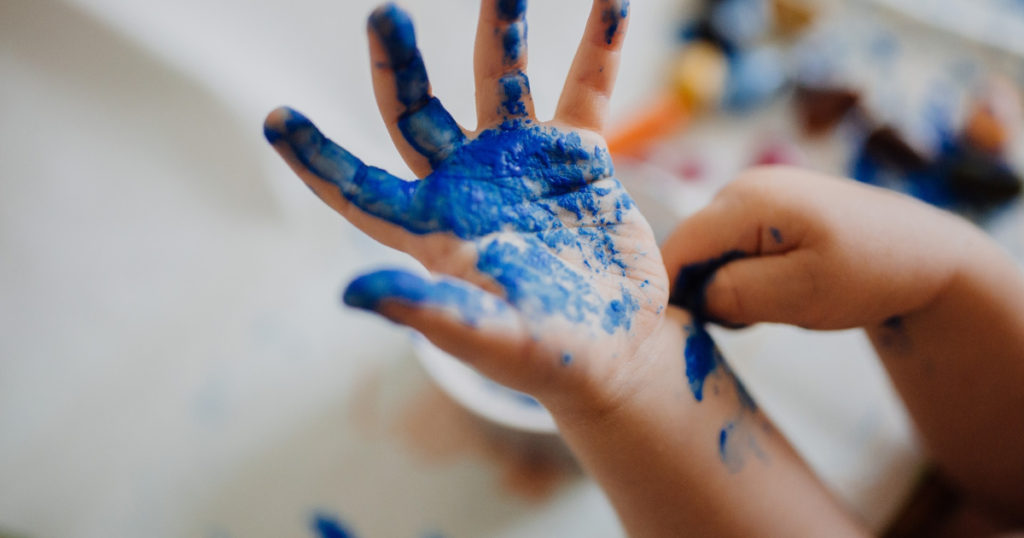Dancing is a natural form of expression and a joyful activity that brings people together. Watching babies dance is an adorable sight that often brings smiles to our faces. But when do babies start dancing?
In this article, we will explore this topic and go deep into the fascinating world of baby dancing. In the end, we will look at why some babies have better dancing moves than others.

The Early Stages of Movement in Babies
Babies start exploring movement and coordination from a very early age. During the first few months of their lives, their movements are mostly involuntary and reflexive. They gradually gain control over their bodies and develop basic motor skills.
Around three to four months old, babies begin to show signs of rhythmic movement. They may kick their legs or move their arms in response to music or sounds.
This early stage of movement is an indication that babies are becoming more aware of their bodies and starting to respond to external stimuli.
Related: Can Babies Have Raspberries?
The Emergence of Dance-like Movements in Babies
Between six and eight months of age, babies typically begin to exhibit more coordinated and intentional movements. They may start bobbing their heads, swaying their bodies, or bouncing up and down in response to music.
These dance-like movements often bring laughter and delight to both the babies and their caregivers.
At this stage, babies are actively exploring their physical capabilities and experimenting with different movements.
They may try to imitate the movements they see around them, such as clapping their hands or waving their arms. While their moves may not resemble traditional dance steps, these early attempts at dancing lay the foundation for future rhythmic abilities.
Babies’ Sensitivity to Music and Beat
Babies have a natural inclination towards music and rhythm. Studies have shown that even newborns can detect and respond to musical stimuli. They are particularly sensitive to the beat and tempo of music, which can elicit spontaneous movement or reactions.
Around nine to twelve months of age, babies become more aware of the rhythm of music and start to synchronize their movements with the beat.
They may clap their hands, stomp their feet, or sway their bodies in time with the music. This is an exciting milestone as babies actively engage with the music and demonstrate their emerging rhythmic abilities.
Cultural Influences on Baby Dancing
Cultural influences play a significant role in baby dancing. Different cultures have their own traditions and rituals involving music and dance.
Babies growing up in households that emphasize music and dancing may start showing dance-like movements at an earlier age.
For example, in some African cultures, babies are often held close to their caregivers’ bodies and gently rocked to the rhythm of music. This early exposure to music and movement can foster a strong sense of rhythm and coordination from an early age.
Related: When do babies get eyebrows?
Why Do Some Babies Dance Better Than Others?
The variation in dancing ability among babies primarily stems from differences in their physical development, exposure to music and rhythm, and individual temperament.
Each baby develops motor skills at their own pace, influencing how they respond to music through movement. Babies with advanced motor skills might find it easier to coordinate their movements with rhythm, appearing to dance ‘better.’
Additionally, the amount and variety of music a baby is exposed to can significantly impact their rhythmic awareness and ability to move in time with music.
Regular exposure to dancing, either by seeing others dance or being encouraged to move to music, helps in developing dancing skills.
Moreover, individual temperament plays a role; some babies might be naturally more inclined to express themselves through movement, showing more enthusiasm and rhythm in their dance. These factors combined result in the varying dance abilities observed among babies.
How to Encourage and Support Baby Dancing
Encouraging and supporting your baby’s dancing is not just about fostering their physical abilities; it’s also about nurturing their emotional, cognitive, and social development.
Here are effective ways to promote and enjoy this delightful stage.
1. Create a Stimulating Musical Environment
- Diverse Music Selection: Expose your baby to a variety of musical genres and rhythms. Different beats and melodies can stimulate different types of movement and emotional responses.
- Regular Musical Exposure: Incorporate music into your daily routine, whether it’s during playtime, bath time, or while relaxing.
2. Participate in Dance Activities
- Dance with Your Baby: Babies often mimic what they see. Dancing with your baby, holding their hands, and gently moving their bodies to the rhythm can encourage them to dance.
- Use Dance Props: Colorful ribbons, scarves, or toys that make music can make dance time more engaging and fun.
3. Encourage Movement Exploration
- Positive Reinforcement: Applaud and cheer when your baby makes dance movements. Positive reinforcement can motivate them to continue exploring movement.
- Create a Safe Space: Ensure that the area where your baby dances is safe and spacious enough for free movement.
4. Observe and Adapt to Your Baby’s Preferences
- Pay Attention to Preferences: Notice the types of music or movements your baby seems to enjoy the most and incorporate more of those into your routine.
- Be Responsive: If your baby shows signs of disinterest or discomfort, switch to a different activity or type of music.
5. Facilitate Social Dancing Opportunities
- Group Play Dates: Engaging in music and dance activities with other babies can be socially stimulating and fun.
- Music and Movement Classes: Consider enrolling in baby music and movement classes, which can be a great way to support your baby’s dancing in a structured environment.
6. Focus on the Fun Aspect
- Enjoy the Process: The primary goal is to have fun and bond with your baby, not to perfect their dance moves.
- Capture the Moments: Take photos or videos to cherish these early dance experiences.
Supporting and encouraging your baby in dancing is a wonderful way to enhance their development while creating joyful memories.
By fostering a love for music and movement, you’re not just aiding their physical growth but also enriching their emotional and social well-being.
Recommended: Can Babies Sense Pregnancy Before You Know?
Benefits of Dancing to Babies
Dancing offers a wide range of benefits to babies, encompassing physical, cognitive, emotional, and social aspects of their development.
Physical Development
- Motor Skills: Dancing helps improve gross motor skills like balance, coordination, and strength. It’s an excellent way for babies to practice standing, bouncing, and eventually walking.
- Physical Fitness: Regular movement through dance promotes overall fitness and health, aiding in muscle development and cardiovascular health.
Cognitive Growth
- Rhythm and Pattern Recognition: Dancing to music helps babies develop an understanding of rhythm and patterns, crucial cognitive skills.
- Brain Stimulation: The combination of music and movement in dancing stimulates different areas of the brain, supporting neural development.
Emotional Benefits
- Expression of Joy and Excitement: Dancing allows babies to express emotions physically, often leading to visible joy and excitement.
- Stress Relief: Just like in adults, physical activity, including dancing, can be a great stress reliever for babies, helping them feel more relaxed and happy.
Social Interaction
- Bonding with Caregivers: Dancing with parents or caregivers strengthens the emotional bond and fosters a sense of security and attachment.
- Social Skills Development: Participating in group dance activities can help babies learn about social interaction, cooperation, and being part of a community.
Enhancing Sensory Integration
- Auditory and Kinesthetic Learning: Dancing integrates auditory (music) and kinesthetic (movement) learning, enhancing sensory processing and coordination.
Language and Communication
- Mimicking Movements and Sounds: Through dancing and accompanying songs, babies can mimic movements and sounds, which is a fundamental aspect of language development.
Encouraging Creativity
- Imaginative Play: Dancing encourages imaginative and creative play, as babies may interpret and express music in their own unique way.
Confidence and Self-Esteem
- Achievement and Encouragement: As babies learn new dance moves and receive positive reinforcement from caregivers, it boosts their confidence and self-esteem.
Do Babies Dance or React to Music in the Womb?
Research suggests that babies can indeed dance or react to music while in the womb. During the last trimester of pregnancy, babies become increasingly capable of hearing a range of musical tones.
Studies have shown that unborn babies can hear music and sounds from outside the womb, and they may respond by moving or dancing in response to the auditory stimuli.
One study conducted in Spain discovered that unborn babies can hear and respond to music as early as 16 weeks gestation, which is ten weeks earlier than previously thought.
Another research found that babies who heard a song repeatedly in the womb seemed to calm down when the same song was played after they were born.
While there is no scientific evidence to suggest that babies are consciously dancing to music in the womb, their movements and reactions to music indicate that they are processing the sound and interacting with it in their own way.
Overall, the ability of babies to dance or react to music in the womb highlights the early development of their auditory system and the potential influence of music on their sensory experiences.
Should I be Worried if My Baby Doesn’t React to Music?
First and foremost, it’s important to recognize that each baby is unique in their development and interests. Just like adults, babies have personal preferences and different rates of development.
Factors Influencing Reaction to Music
- Developmental Pace: Some babies may take longer to show noticeable reactions to music.
- Sensory Sensitivities: Babies have varying levels of sensitivity to sensory stimuli. Some might be more responsive to visual stimuli than auditory, for instance.
- Environmental Factors: The frequency and manner in which music is presented can influence a baby’s reaction. A baby might react differently in a calm environment versus a more stimulating one.
When to Observe and Consult
- Observation Over Time: If your baby consistently shows no response to different types of music and sounds over time, it might be worth paying closer attention.
- Consulting Professionals: If you have concerns about your baby’s hearing or overall sensory responses, consulting a pediatrician or a child development specialist is advisable.
Alternative Ways to Engage
- Experiment with Different Sounds: Try different genres of music, singing to your baby, or using musical toys to see if there’s a specific type of sound or music they prefer.
- Incorporate Other Stimuli: Combine music with visual or tactile stimuli, like colorful lights or soft dancing toys, to see if this elicits more of a response.
Not reacting to music doesn’t necessarily indicate a problem. Babies show interest and enjoyment in myriad ways and have diverse preferences.
However, if you have concerns about your baby’s development or sensory processing, it’s always a good idea to discuss them with a healthcare provider.
Remember, the key is to enjoy your time with your baby and provide a range of experiences to support their growth and development.
Frequently Asked Questions
Why is dancing important for a baby’s development?
Dancing aids in a baby’s physical development, improving coordination, balance, and muscle strength. It also supports cognitive growth by enhancing pattern recognition and memory, and encourages emotional expression and social interaction.
How can I tell if my baby is dancing?
Dancing in babies can be identified as rhythmic movements, like bouncing, swaying, or waving their arms in response to music. It's more about the enjoyment and rhythm of the movement than the precision of the dance.
What kind of music do babies prefer for dancing?
Babies may enjoy a variety of music genres. They often respond well to songs with a clear, steady beat and playful rhythms. Experiment with different types of music to see what your baby enjoys most.
Can babies dance before they can walk?
Yes, babies can engage in dance-like movements before they can walk. This might include bouncing while sitting or swaying on their hands and knees.
Should I be concerned if my baby doesn’t dance to music?
Not necessarily. Babies have individual preferences and developmental timelines. If your baby enjoys and responds to music in other ways, such as smiling or cooing, there’s likely no cause for concern. However, if you have any developmental concerns, consult with a pediatrician.
How can I encourage my baby to dance?
You can encourage your baby to dance by playing a variety of music, dancing with your baby, using musical toys, and celebrating any dance-like movements they make.
Does dancing help with a baby’s language development?
Dancing can indirectly support language development by enhancing cognitive skills and auditory processing. The social interaction and repetition involved in dancing and singing can also be beneficial.
Is there a difference in dancing ability among babies?
Yes, there can be differences in dancing ability among babies due to varying rates of motor development, exposure to music and dance, and individual temperament.
Can prenatal exposure to music influence a baby’s propensity to dance?
Prenatal exposure to music might influence a baby's interest in and response to music after birth. Babies are capable of hearing and responding to music in the womb, which may lay a foundation for their postnatal reactions to music.




